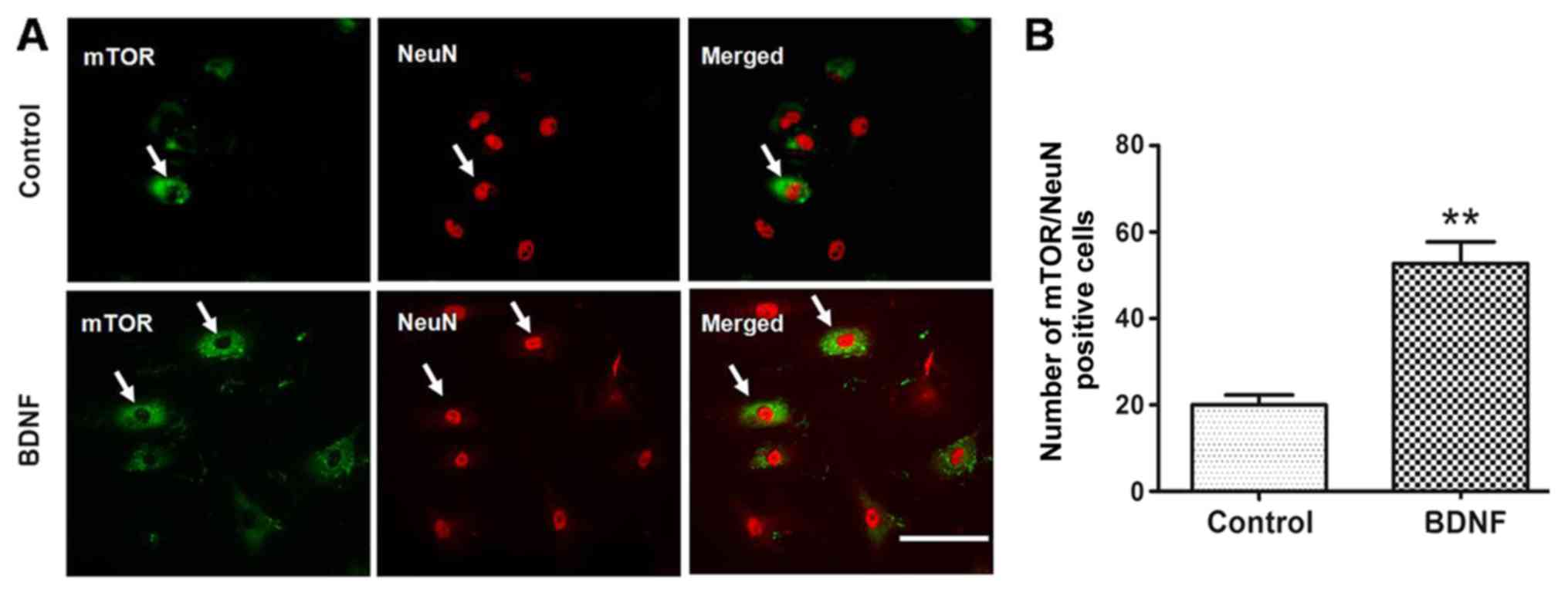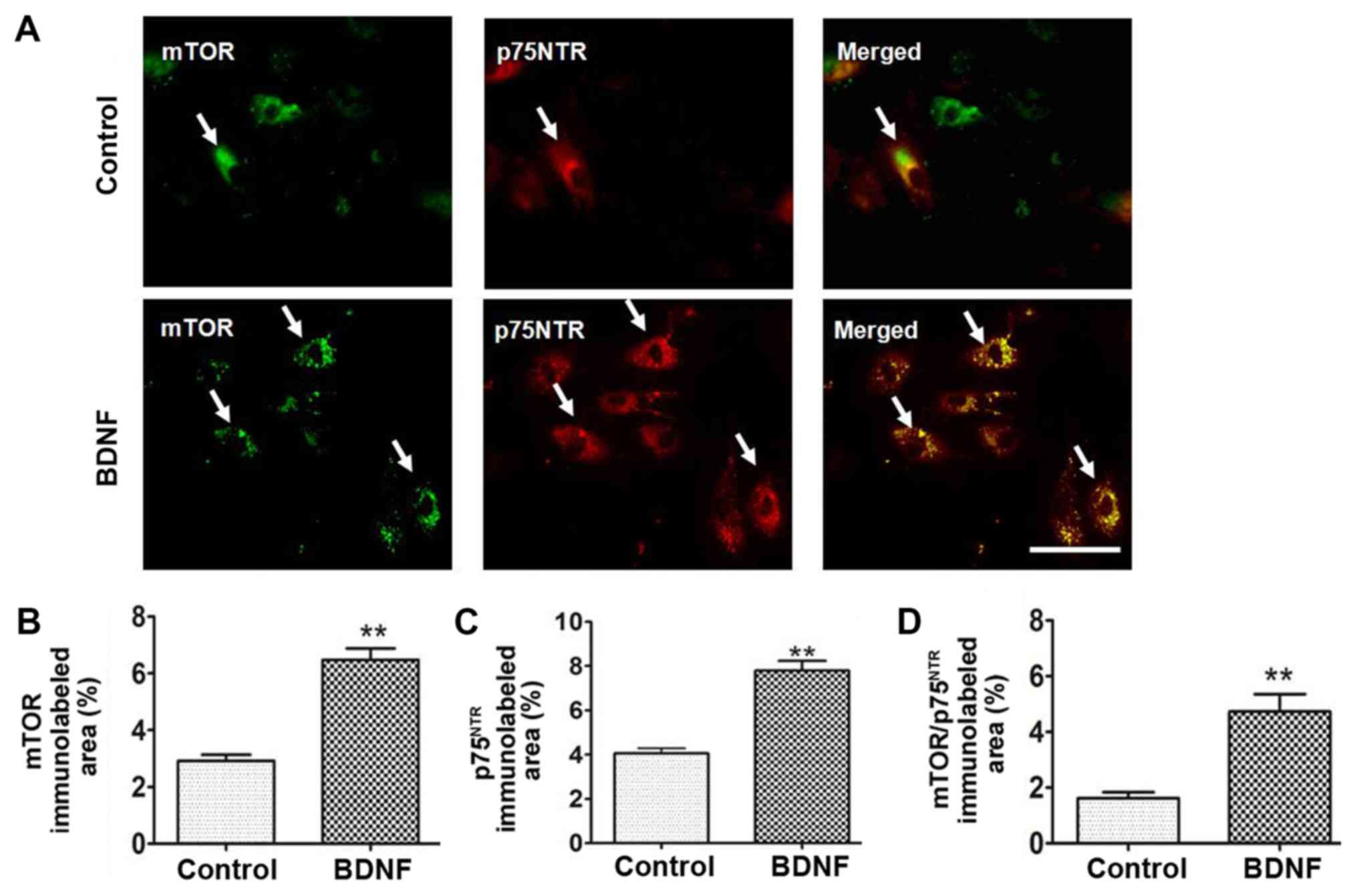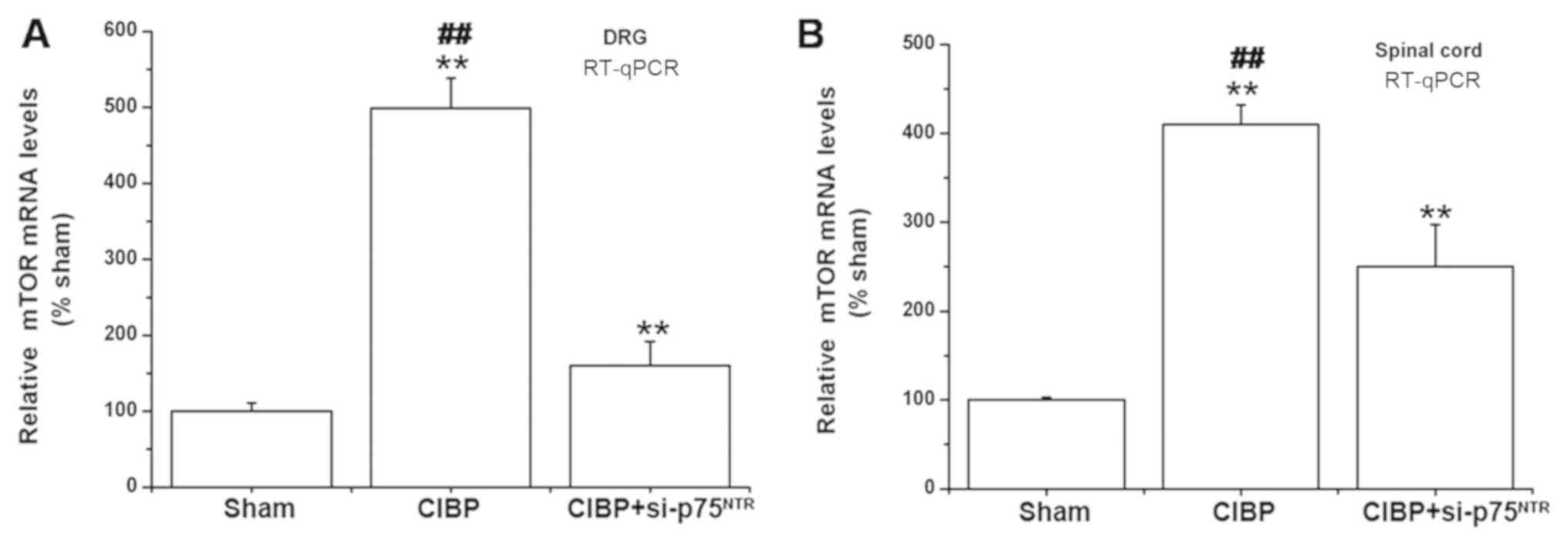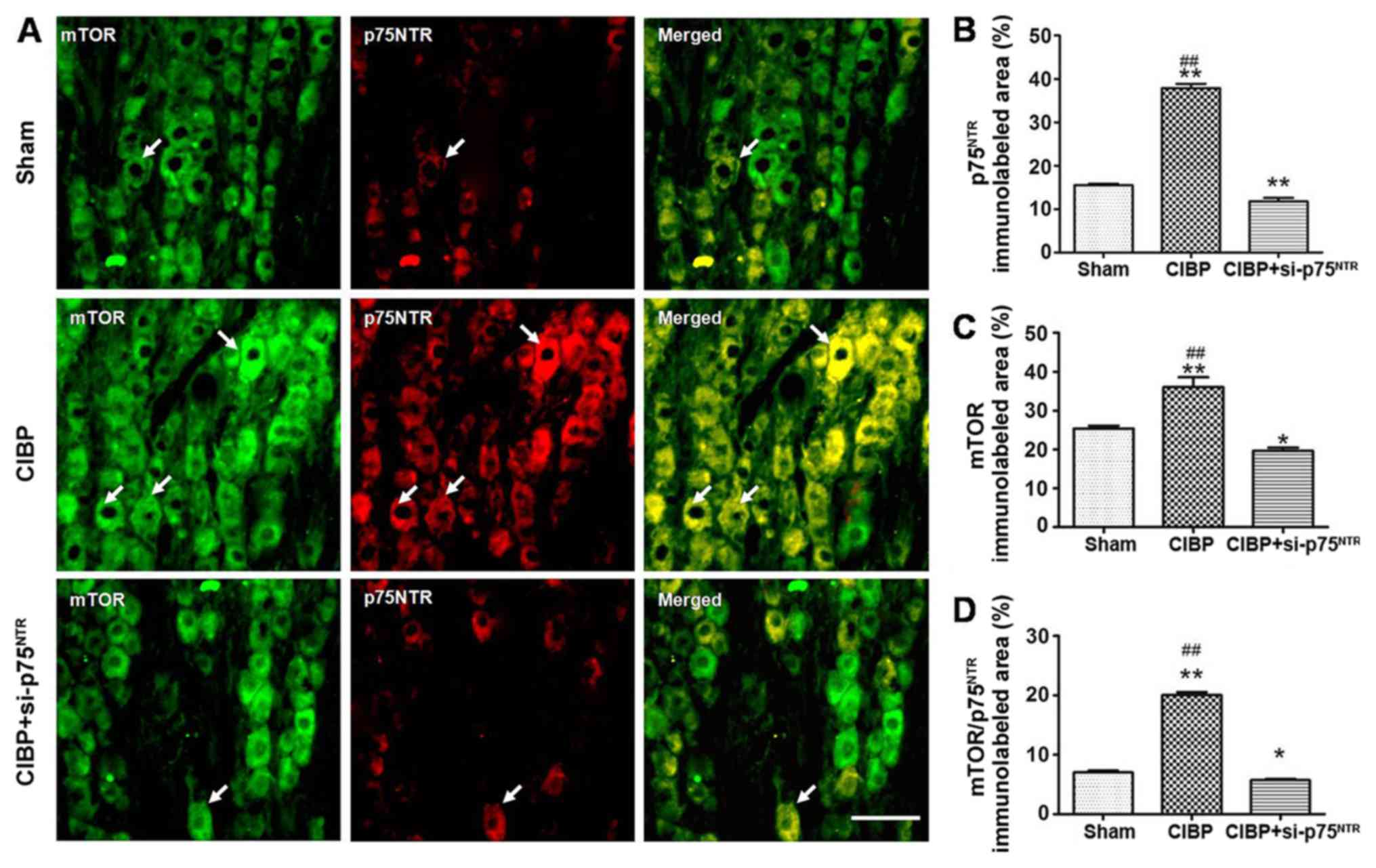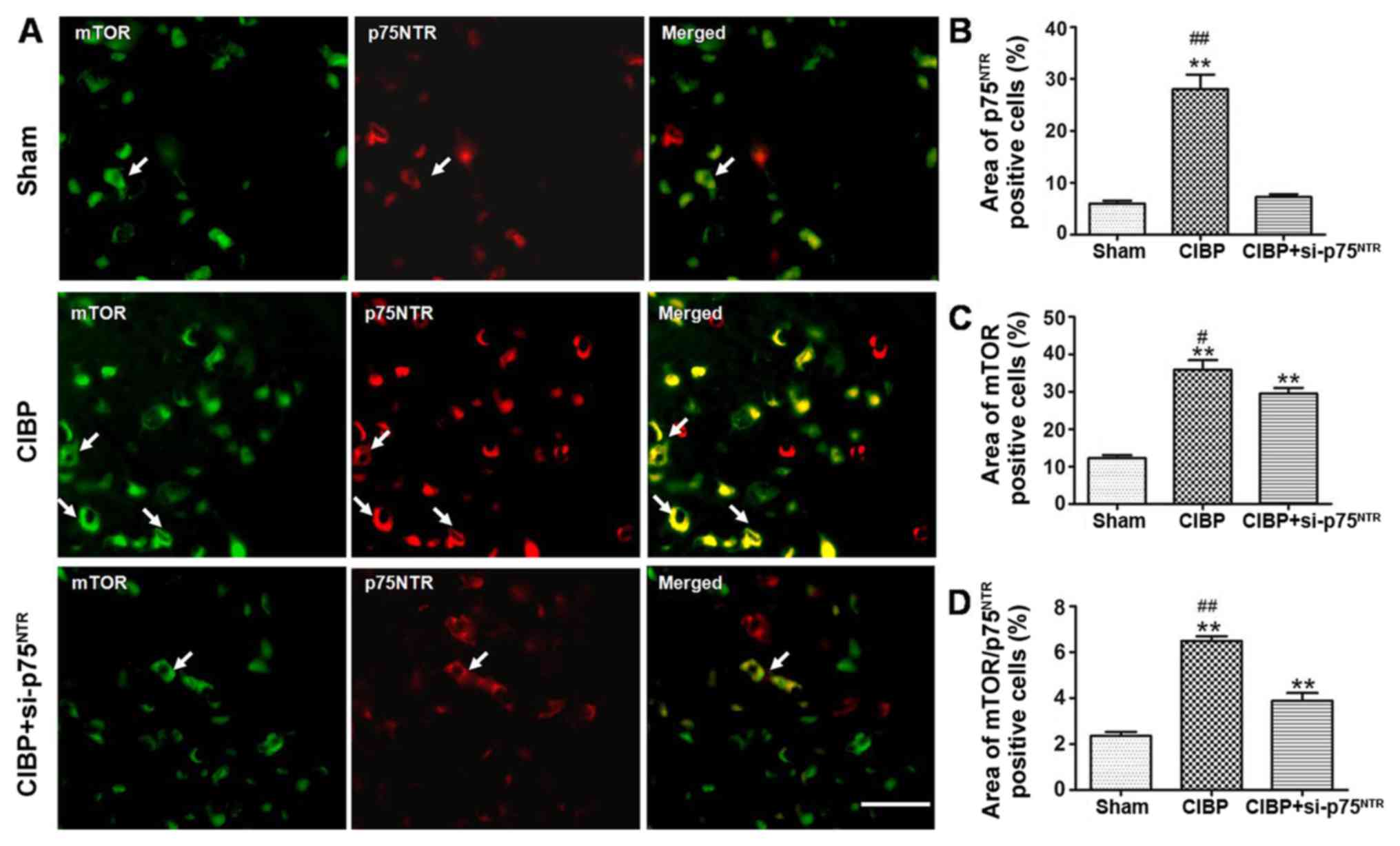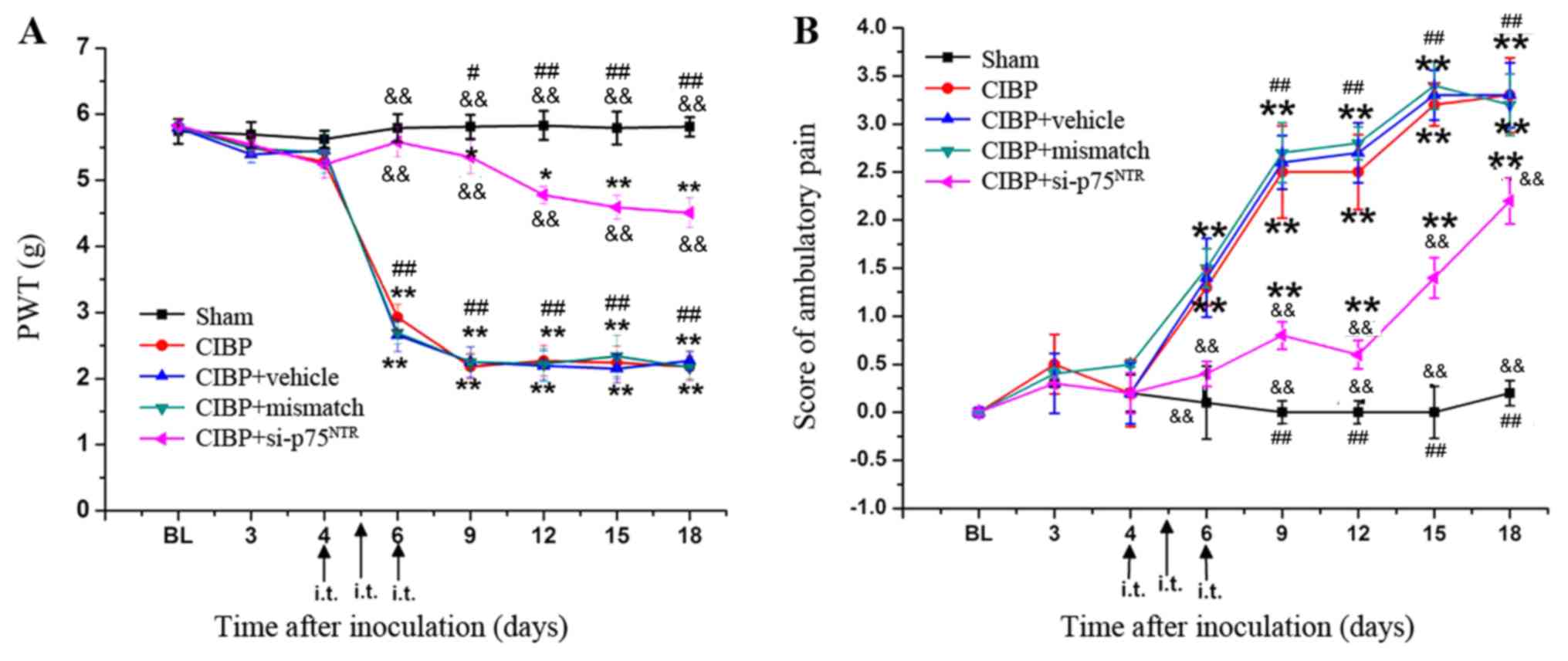|
1
|
Falk S and Dickenson AH: Pain and
nociception: Mechanisms of cancer-induced bone pain. J Clin Oncol.
32:1647–1654. 2014. View Article : Google Scholar : PubMed/NCBI
|
|
2
|
Zhu S, Wang C, Han Y, Song C, Hu X and Liu
Y: Sigma-1 receptor antagonist BD1047 reduces mechanical allodynia
in a rat model of bone cancer pain through the inhibition of spinal
NR1 phosphorylation and microglia activation. Mediators Inflamm.
2015:2650562015. View Article : Google Scholar : PubMed/NCBI
|
|
3
|
Liu L, Gao XJ, Ren CG, Hu JH, Liu XW,
Zhang P, Zhang ZW and Fu ZJ: Monocyte chemoattractant protein-1
contributes to morphine tolerance in rats with cancer-induced bone
pain. Exp Ther Med. 13:461–466. 2017. View Article : Google Scholar : PubMed/NCBI
|
|
4
|
Bao Y, Hou W, Liu R, Gao Y, Kong X, Yang
L, Shi Z, Li W, Zheng H, Jiang S, et al: PAR2-mediated upregulation
of BDNF contributes to central sensitization in bone cancer pain.
Mol Pain. 10:282014. View Article : Google Scholar : PubMed/NCBI
|
|
5
|
Tomotsuka N, Kaku R, Obata N, Matsuoka Y,
Kanzaki H, Taniguchi A, Muto N, Omiya H, Itano Y, Sato T, et al:
Up-regulation of brain-derived neurotrophic factor in the dorsal
root ganglion of the rat bone cancer pain model. J Pain Res.
7:415–423. 2014. View Article : Google Scholar : PubMed/NCBI
|
|
6
|
Wang LN, Yang JP, Ji FH, Wang XY, Zuo JL,
Xu QN, Jia XM, Zhou J, Ren CG and Li W: The role of brain-derived
neurotrophic factor in pain facilitation and spinal mechanism in
rat model of bone cancer pain. Zhonghua Yi Xue Za Zhi.
91:1188–1192. 2011.(In Chinese). PubMed/NCBI
|
|
7
|
Obata K, Katsura H, Sakurai J, Kobayashi
K, Yamanaka H, Dai Y, Fukuoka T and Noguchi K: Suppression of the
p75 neurotrophin receptor in uninjured sensory neurons reduces
neuropathic pain after nerve injury. J Neurosci. 26:11974–11986.
2006. View Article : Google Scholar : PubMed/NCBI
|
|
8
|
Matsuura Y, Iwakura N, Ohtori S, Suzuki T,
Kuniyoshi K, Murakami K, Hiwatari R, Hashimoto K, Okamoto S,
Shibayama M, et al: The effect of anti-NGF receptor (p75
Neurotrophin Receptor) antibodies on nociceptive behavior and
activation of spinal microglia in the rat brachial plexus avulsion
model. Spine (Phila Pa 1976). 38:E332–E338. 2013. View Article : Google Scholar : PubMed/NCBI
|
|
9
|
Lee KF, Li E, Huber LJ, Landis SC, Sharpe
AH, Chao MV and Jaenisch R: Targeted mutation of the gene encoding
the low affinity NGF receptor p75 leads to deficits in the
peripheral sensory nervous system. Cell. 69:737–749. 1992.
View Article : Google Scholar : PubMed/NCBI
|
|
10
|
Wang X, Li X, Huang B and Ma S: Blocking
mammalian target of rapamycin (mTOR) improves neuropathic pain
evoked by spinal cord injury. Transl Neurosci. 7:50–55. 2016.
View Article : Google Scholar : PubMed/NCBI
|
|
11
|
Lutz BM, Nia S, Xiong M, Tao YX and Bekker
A: MTOR, a new potential target for chronic pain and opioid-induced
tolerance and hyperalgesia. Mol Pain. 11:322015. View Article : Google Scholar : PubMed/NCBI
|
|
12
|
Lisi L, Aceto P, Navarra P and Dello Russo
C: MTOR kinase: A possible pharmacological target in the management
of chronic pain. Biomed Res Int. 2015:3942572015. View Article : Google Scholar : PubMed/NCBI
|
|
13
|
Jiang Z, Wu S, Wu X, Zhong J, Lv A, Jiao J
and Chen Z: Blocking mammalian target of rapamycin alleviates bone
cancer pain and morphine tolerance via micro-opioid receptor. Int J
Cancer. 138:2013–2020. 2016. View Article : Google Scholar : PubMed/NCBI
|
|
14
|
Shih MH, Kao SC, Wang W, Yaster M and Tao
YX: Spinal cord NMDA receptor-mediated activation of mammalian
target of rapamycin is required for the development and maintenance
of bone cancer-induced pain hypersensitivities in rats. J Pain.
13:338–349. 2012. View Article : Google Scholar : PubMed/NCBI
|
|
15
|
National Research Council (US) Institute
for Laboratory Animal Research, . Guide for the Care and Use of
Laboratory AnimalsNational Academies Press (US); Washington, DC:
1996
|
|
16
|
Zimmermann M: Ethical guidelines for
investigations of experimental pain in conscious animals. Pain.
16:109–110. 1983. View Article : Google Scholar : PubMed/NCBI
|
|
17
|
Yuan B, Tang WH, Lu LJ, Zhou Y, Zhu HY,
Zhou YL, Zhang HH, Hu CY and Xu GY: TLR4 upregulates CBS expression
through NF-kappaB activation in a rat model of irritable bowel
syndrome with chronic visceral hypersensitivity. World J
Gastroenterol. 21:8615–8628. 2015. View Article : Google Scholar : PubMed/NCBI
|
|
18
|
Wang LN, Yang JP, Ji FH, Zhan Y, Jin XH,
Xu QN, Wang XY and Zuo JL: Brain-derived neurotrophic factor
modulates N-methyl-D-aspartate receptor activation in a rat model
of cancer-induced bone pain. J Neurosci Res. 90:1249–1260. 2012.
View Article : Google Scholar : PubMed/NCBI
|
|
19
|
Zhao C, Lv C, Li H, Du S, Liu X, Li Z, Xin
W and Zhang W: Geniposide protects primary cortical neurons against
oligomeric Abeta1-42-induced neurotoxicity through a mitochondrial
pathway. PLoS One. 11:e01525512016. View Article : Google Scholar : PubMed/NCBI
|
|
20
|
Ghilardi JR, Freeman KT, Jimenez-Andrade
JM, Mantyh WG, Bloom AP, Kuskowski MA and Mantyh PW: Administration
of a tropomyosin receptor kinase inhibitor attenuates
sarcoma-induced nerve sprouting, neuroma formation and bone cancer
pain. Mol Pain. 6:872010. View Article : Google Scholar : PubMed/NCBI
|
|
21
|
Yang Y, Li H, Li TT, Luo H, Gu XY, Lü N,
Ji RR and Zhang YQ: Delayed activation of spinal microglia
contributes to the maintenance of bone cancer pain in female wistar
rats via P2X7 receptor and IL-18. J Neurosci. 35:7950–7963. 2015.
View Article : Google Scholar : PubMed/NCBI
|
|
22
|
Milligan ED, Hinde JL, Mehmert KK, Maier
SF and Watkins LR: A method for increasing the viability of the
external portion of lumbar catheters placed in the spinal
subarachnoid space of rats. J Neurosci Methods. 90:81–86. 1999.
View Article : Google Scholar : PubMed/NCBI
|
|
23
|
Song C, Liu D, Yang S, Cheng L, Xing E and
Chen Z: Sericin enhances the insulin-PI3K/AKT signaling pathway in
the liver of a type 2 diabetes rat model. Exp Ther Med.
16:3345–3352. 2018.PubMed/NCBI
|
|
24
|
Zhou YQ, Chen SP, Liu DQ, Manyande A,
Zhang W, Yang SB, Xiong BR, Fu QC, Song ZP, Rittner H, et al: The
role of spinal GABAB receptors in cancer-induced Bone Pain in Rats.
J Pain. 18:933–946. 2017. View Article : Google Scholar : PubMed/NCBI
|
|
25
|
Lan LS, Ping YJ, Na WL, Miao J, Cheng QQ,
Ni MZ, Lei L, Fang LC, Guang RC, Jin Z and Wei L: Down-regulation
of Toll-like receptor 4 gene expression by short interfering RNA
attenuates bone cancer pain in a rat model. Mol Pain. 6:22010.
View Article : Google Scholar : PubMed/NCBI
|
|
26
|
Luger NM, Sabino MA, Schwei MJ, Mach DB,
Pomonis JD, Keyser CP, Rahtbun M, Clohisy DR, Honore P, Yaksh TL
and Mantyh PW: Efficacy of systemic morphine suggests a fundamental
difference in the mechanisms that generate bone cancer vs
inflammatory pain. Pain. 99:397–406. 2002. View Article : Google Scholar : PubMed/NCBI
|
|
27
|
Appel CK, Gallego-Pedersen S, Andersen L,
Blancheflor Kristensen S, Ding M, Falk S, Sayilekshmy M,
Gabel-Jensen C and Heegaard AM: The src family kinase inhibitor
dasatinib delays pain-related behaviour and conserves bone in a rat
model of cancer-induced bone pain. Sci Rep. 7:47922017. View Article : Google Scholar : PubMed/NCBI
|
|
28
|
Shenoy PA, Kuo A, Khan N, Gorham L,
Nicholson JR, Corradini L, Vetter I and Smith MT: The somatostatin
receptor-4 agonist J-2156 alleviates mechanical hypersensitivity in
a rat model of breast cancer induced bone pain. Front Pharmacol.
9:4952018. View Article : Google Scholar : PubMed/NCBI
|
|
29
|
Chen W, Walwyn W, Ennes HS, Kim H,
McRoberts JA and Marvizon JC: BDNF released during neuropathic pain
potentiates NMDA receptors in primary afferent terminals. Eur J
Neurosci. 39:1439–1454. 2014. View Article : Google Scholar : PubMed/NCBI
|
|
30
|
Hang LH, Li SN, Dan X, Shu WW, Luo H and
Shao DH: Involvement of spinal CCR5/PKCgamma signaling pathway in
the maintenance of cancer-induced bone pain. Neurochem Res.
42:563–571. 2017. View Article : Google Scholar : PubMed/NCBI
|
|
31
|
Wang X, Zhang L, Zhan Y, Li D, Zhang Y,
Wang G and Zhang M: Contribution of BDNF/TrkB signalling in the
rACC to the development of pain-related aversion via activation of
ERK in rats with spared nerve injury. Brain Res. 1671:111–120.
2017. View Article : Google Scholar : PubMed/NCBI
|
|
32
|
Khan N, Gordon R, Woodruff TM and Smith
MT: Antiallodynic effects of alpha lipoic acid in an optimized
RR-EAE mouse model of MS-neuropathic pain are accompanied by
attenuation of upregulated BDNF-TrkB-ERK signaling in the dorsal
horn of the spinal cord. Pharmacol Res Perspect. 3:e001372015.
View Article : Google Scholar : PubMed/NCBI
|
|
33
|
Hildebrand ME, Xu J, Dedek A, Li Y, Sengar
AS, Beggs S, Lombroso PJ and Salter MW: Potentiation of synaptic
gluN2B NMDAR currents by fyn kinase is gated through BDNF-mediated
disinhibition in spinal pain processing. Cell Rep. 17:2753–2765.
2016. View Article : Google Scholar : PubMed/NCBI
|
|
34
|
Chodroff L, Bendele M, Valenzuela V, Henry
M and Ruparel S: Express: BDNF signaling contributes to oral cancer
pain in a preclinical orthotopic rodent model. Mol Pain.
12:1744806916666412016. View Article : Google Scholar
|
|
35
|
Fang X, Yang C, Li S, Zhan G, Zhang J,
Huang N, Du X, Xu H, Hashimoto K and Luo A: Brain-derived
neurotrophic factor-TrkB signaling in the medial prefrontal cortex
plays a role in the anhedonia-like phenotype after spared nerve
injury. Eur Archf Psychiatry Clin Neurosci. 7:102018.
|
|
36
|
Yao P, Ding Y, Han Z, Mu Y, Hong T, Zhu Y
and Li H: Suppression of asparaginyl endopeptidase attenuates
breast cancer-induced bone pain through inhibition of neurotrophin
receptors. Mol Pain. 13:17448069177081272017. View Article : Google Scholar : PubMed/NCBI
|
|
37
|
Hua Z, Gu X, Dong Y, Tan F, Liu Z, Thiele
CJ and Li Z: PI3K and MAPK pathways mediate the BDNF/TrkB-increased
metastasis in neuroblastoma. Tumour Biol. 17:2016.
|
|
38
|
Zhuang F, Li M, Gao X, Wang Y, Wang D, Ma
X, Ma T and Gu S: The antidepressant-like effect of alarin is
related to TrkB-mTOR signaling and synaptic plasticity. Behav Brain
Res. 313:158–171. 2016. View Article : Google Scholar : PubMed/NCBI
|
|
39
|
Zhang Y, Ji F, Wang G, He D, Yang L and
Zhang M: BDNF activates mTOR to upregulate NR2B expression in the
rostral anterior cingulate cortex required for inflammatory
pain-related aversion in rats. Neurochem Res. 43:681–691. 2018.
View Article : Google Scholar : PubMed/NCBI
|















